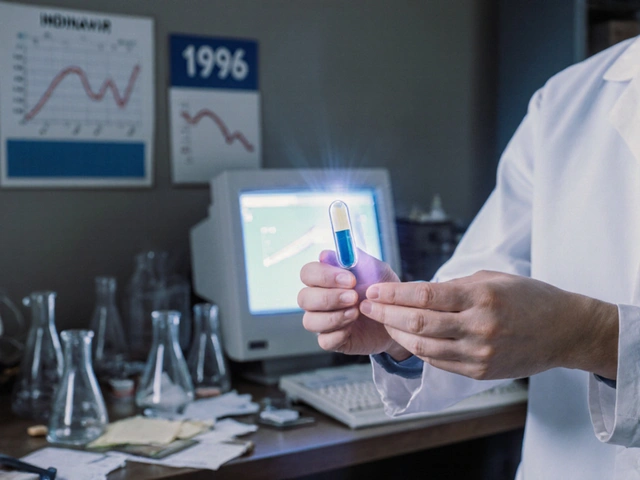People turn to Cerecetam and Piracetam hoping for sharper focus, better memory, or clearer thinking. But with so many alternatives on the market, how do you know which one actually works? And more importantly-which one is right for you?
What is Cerecetam and Piracetam?
Cerecetam is a branded form of Piracetam, often sold as a dietary supplement with the same active ingredient: 2-oxo-1-pyrrolidine acetamide. It was developed in the 1960s by Romanian scientist Corneliu Giurgea and is classified as a nootropic-a substance designed to enhance cognitive function without significant side effects.
Piracetam is the original compound. It’s not a stimulant like caffeine. Instead, it works by improving communication between brain cells, increasing blood flow to the brain, and boosting acetylcholine activity-a key neurotransmitter for memory and learning.
Many brands label their Piracetam as Cerecetam for marketing reasons. In reality, they’re the same molecule. The difference? Price and purity. Some Cerecetam products cost twice as much as generic Piracetam, with no added benefit.
How Cerecetam/Piracetam Actually Works
Piracetam doesn’t give you an instant mental boost like Adderall. It works slowly, over days or weeks. Studies show it improves memory recall in older adults with mild cognitive decline. One 1991 trial published in Current Medical Research and Opinion found that elderly patients taking 1,600 mg daily for six weeks had better verbal learning scores than those on placebo.
It also helps with brain oxygen use. People with dyslexia or post-stroke cognitive issues have shown modest improvements in language and attention after using Piracetam for months.
But here’s the catch: it doesn’t work for everyone. If you’re young and healthy, you might not notice any difference. The benefits show up most clearly in people over 40 or those with existing cognitive challenges.
Top Alternatives to Cerecetam/Piracetam
If you’ve tried Piracetam and didn’t feel anything-or you’re looking for something stronger-here are the most researched alternatives.
Aniracetam
Aniracetam is a fat-soluble cousin of Piracetam. It crosses the blood-brain barrier faster and targets AMPA receptors, which are linked to mood and anxiety.
Unlike Piracetam, Aniracetam may reduce social anxiety. A 2002 study in Neuropharmacology showed it reduced fear responses in animals. Users report feeling more relaxed and mentally fluid-less mental fog, more creativity.
Downside? It has a short half-life. You need to take it twice a day. And because it’s fat-soluble, it works better with food or a spoon of olive oil.
Phenylpiracetam
Phenylpiracetam is Piracetam with a phenyl group added. This small change makes it 30-60 times more potent.
It’s used by Russian cosmonauts to combat fatigue in space. People take it for intense focus during long work sessions or exams. One 2008 study in Human Psychopharmacology found it improved reaction time and mental endurance under stress.
But it’s stimulant-like. Some users get jittery, anxious, or have trouble sleeping if they take it after noon. Not ideal for daily use. Best for occasional high-demand days.
Coluracetam
Coluracetam is one of the least known but most interesting alternatives. It works by enhancing high-affinity choline uptake (HACU), which boosts acetylcholine production more efficiently than other racetams.
Users report clearer thinking, better memory retention, and even reduced brain fog from chronic stress. A 2014 animal study showed it reversed memory deficits caused by scopolamine-a drug that blocks acetylcholine.
It’s expensive and hard to find. Most people only try it after other racetams fail. But if you’ve got low choline levels or struggle with memory despite good sleep and diet, it might be worth a shot.
L-theanine + Caffeine
L-theanine is an amino acid found in green tea. When paired with caffeine, it creates a calm, focused energy without the crash.
Multiple studies, including one in Biological Psychology in 2008, show this combo improves attention, reaction time, and accuracy on cognitive tasks. It’s not a racetam-but it’s more reliable for daily use.
It’s safe, legal, and available everywhere. A 200 mg L-theanine + 100 mg caffeine dose is a popular morning stack. No tolerance builds up. No withdrawal. Just steady focus.
Modafinil
Modafinil is a prescription drug used for narcolepsy and shift work sleep disorder. But it’s widely used off-label as a cognitive enhancer.
It’s not a racetam. It works by increasing dopamine and orexin in the brain. People report waking up alert, staying focused for 12+ hours, and feeling mentally “clean.” A 2015 meta-analysis in European Neuropsychopharmacology confirmed it improves planning, memory, and executive function in healthy adults.
But it’s not a supplement. It’s a controlled substance in many countries. You need a prescription. And it can cause insomnia, headaches, or increased heart rate. Not for casual use.

Comparison Table: Cerecetam/Piracetam vs Alternatives
| Compound | Primary Benefit | Onset Time | Daily Dose | Duration | Side Effects |
|---|---|---|---|---|---|
| Piracetam (Cerecetam) | Memory, learning, brain oxygen use | 1-2 weeks | 1,200-4,800 mg | 6-8 hours | Mild headache, irritability (if no choline) |
| Aniracetam | Mood, creativity, anxiety reduction | 30-60 minutes | 750-1,500 mg | 2-4 hours | Stomach upset, fatigue if overdosed |
| Phenylpiracetam | Focus, stamina, stress resistance | 20-40 minutes | 100-200 mg | 4-6 hours | Anxiety, insomnia, jitters |
| Coluracetam | Memory retention, choline efficiency | 1-2 weeks | 5-20 mg | 6-8 hours | Headache, nausea (rare) |
| L-theanine + Caffeine | Calm focus, attention | 15-30 minutes | 200 mg + 100 mg | 3-6 hours | None at normal doses |
| Modafinil | Alertness, executive function | 30-60 minutes | 100-200 mg | 10-15 hours | Insomnia, headache, elevated BP |
Who Should Use What?
If you’re over 45 and noticing slower recall or trouble learning new things, start with Piracetam. It’s the most studied for age-related cognitive decline. Pair it with choline (like Alpha-GPC or citicoline) to prevent headaches.
If you’re under 35 and want to crush a 12-hour workday, try Phenylpiracetam-but only once or twice a week. Don’t use it daily. Your brain will adapt, and you’ll need more.
If you’re stressed, anxious, or mentally foggy from burnout, go with Aniracetam or L-theanine + caffeine. They calm the nervous system while sharpening focus. No crash. No dependency.
If you’re dealing with serious memory loss or brain injury, Coluracetam shows promise-but it’s expensive and hard to source. Talk to a doctor first.
If you need maximum alertness for a critical deadline or shift work, Modafinil works-but it’s a prescription drug. Don’t buy it online without knowing the risks. Counterfeit versions are common.

Common Mistakes People Make
- Skipping choline. Piracetam increases acetylcholine demand. Without enough choline, you get headaches. Take 250-500 mg of Alpha-GPC or citicoline daily.
- Expecting instant results. Racetams build up over weeks. Don’t quit after three days.
- Stacking too many at once. Mixing Phenylpiracetam with Modafinil? That’s a recipe for anxiety and heart palpitations.
- Buying from unverified sellers. Many "Cerecetam" products are just Piracetam with a fancy label. Check lab reports (COA) before buying.
- Using it as a substitute for sleep or diet. No supplement fixes poor sleep, dehydration, or lack of exercise.
What’s the Best Choice?
There’s no single "best" nootropic. It depends on your goals, age, and health.
For most people: start with L-theanine + caffeine. Safe, cheap, effective.
For memory improvement over 40: Piracetam + choline.
For occasional high-performance days: Phenylpiracetam (once a week).
For anxiety and mental clarity: Aniracetam.
For serious cognitive support: Coluracetam or Modafinil (with medical supervision).
Don’t chase the "strongest" nootropic. Chase the one that fits your body and your life.
Is Cerecetam better than Piracetam?
No. Cerecetam is just a branded version of Piracetam. They contain the same active ingredient. The only difference is price and marketing. Generic Piracetam from a reputable supplier works just as well and costs far less.
Can I take Piracetam every day?
Yes, most people take 1,200-4,800 mg daily without issues. Long-term studies show it’s well-tolerated. But always pair it with a choline source to prevent headaches. Take breaks every few months to avoid tolerance buildup.
Does Piracetam help with anxiety?
Not really. Piracetam is neutral on mood. If you want anxiety relief, try Aniracetam or L-theanine instead. They directly affect GABA and AMPA receptors linked to calmness.
Are nootropics legal?
Piracetam, Aniracetam, and Phenylpiracetam are legal to buy and possess in most countries as dietary supplements. Modafinil is prescription-only in the U.S., Canada, and EU. Always check your local laws before purchasing.
How long until I feel the effects?
For Piracetam and Coluracetam, it takes 1-4 weeks of daily use to notice improvements. Aniracetam and Phenylpiracetam work within an hour. L-theanine + caffeine kicks in in 15-30 minutes. Modafinil takes 30-60 minutes.
Can I combine nootropics?
Yes, but be careful. A safe combo is Piracetam + Alpha-GPC + L-theanine. Avoid stacking stimulant-like racetams (Phenylpiracetam) with Modafinil or high-dose caffeine. That can lead to anxiety, rapid heartbeat, or insomnia.
Do nootropics show up on drug tests?
No. Standard drug tests don’t screen for racetams or L-theanine. Modafinil might show up in specialized tests, but it’s not part of routine panels. Always check your employer’s policy if you’re subject to testing.
Final Thoughts
The nootropic world is full of hype. But the science is clear: not all brain supplements are equal. Cerecetam and Piracetam have decades of research behind them-but they’re not magic pills. They work best when paired with good sleep, hydration, and real food.
Don’t get caught up in brand names. Look at the active ingredient. Don’t stack everything you hear about. Start simple. Track how you feel. And remember: the best cognitive enhancer is still a good night’s sleep and a walk outside.






Comments
Dana Dolan
November 18, 2025 AT 22:30 PMi just took piracetam for two weeks and didn’t feel a damn thing. then i tried l-theanine + caffeine and suddenly i was actually getting stuff done without the jitters. guess the hype’s just marketing.
James Ó Nuanáin
November 19, 2025 AT 20:51 PMAs a British academic with over two decades of research in neuropharmacology, I must emphasize that the entire 'nootropic' industry is a grotesque parody of science. Piracetam has been studied since 1964, and yet Americans treat it like a TikTok trend. The fact that you're even comparing it to modafinil-prescribed for narcolepsy-is frankly irresponsible. Also, 'Cerecetam' is a scam. End of story.
Nick Lesieur
November 19, 2025 AT 23:40 PMlol so you're telling me i paid $80 for 'cerecetam' when i could've just bought piracetam powder off amazon for $15? i feel like such a chump. also, who even uses 'choline' anymore? i just chug coffee and hope for the best.
Angela Gutschwager
November 20, 2025 AT 23:08 PManiracetam changed my life. no joke. i was so anxious i couldn’t talk to people. now i’m chill, focused, and actually enjoy meetings. also, buy it with olive oil. it matters.
Andy Feltus
November 22, 2025 AT 22:16 PMyou’re all missing the point. the real nootropic isn’t a pill-it’s sleep. it’s walking outside. it’s not scrolling at 2 a.m. while taking phenylpiracetam because you think you’re ‘optimizing.’ you’re not. you’re just trying to outrun your burnout with chemistry. the brain doesn’t need more drugs. it needs less noise.
Dion Hetemi
November 24, 2025 AT 21:01 PMmodafinil is the only real one. if you’re not on it, you’re just playing with kid’s toys. piracetam? that’s like using a bicycle when you could’ve bought a tesla. also, anyone who says 'l-theanine + caffeine' is better is just scared of real focus. wake up.
Kara Binning
November 26, 2025 AT 01:17 AMOMG I just found out Cerecetam is just piracetam?? I spent $120 on that stuff and my roommate laughed at me for a week. I feel so betrayed. Also, I think my cat judges me for taking nootropics. She stares. I know she does.
river weiss
November 26, 2025 AT 17:47 PMIt is imperative to note that the pharmacokinetics of racetams are highly dependent on individual metabolic variance, choline availability, and hepatic enzyme activity. Furthermore, the purported benefits of aniracetam on AMPA receptor modulation are not universally reproducible across clinical populations. I recommend initiating with low-dose piracetam (1,200 mg) alongside 300 mg Alpha-GPC, and monitoring cognitive performance via objective metrics-e.g., digit span, trail-making tests-over a 30-day period. Do not rely on anecdotal reports.
Brian Rono
November 27, 2025 AT 13:21 PMLet me be the one to say it: if you're still using piracetam in 2025, you're basically bringing a floppy disk to a cloud server party. Coluracetam? Now that's a whisper of genius. But even that? Still just a Band-Aid on a hemorrhage. The real upgrade? Stop chasing brain chemicals and start fixing your life. You're not broken-you're just bored, overworked, and staring at a screen too long. Go hug a tree. Then come back and tell me if you still need a pill.